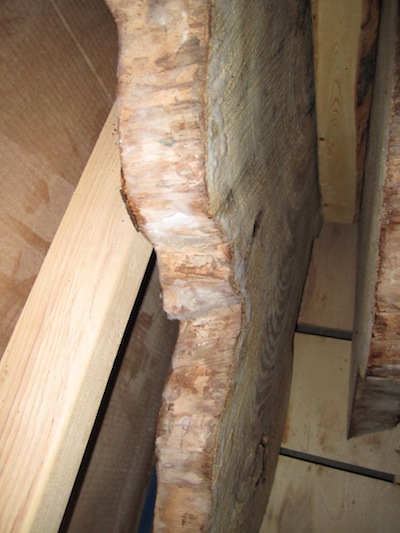What Did People Do Before There Was Kiln-Drying?
A historical discussion about lumber drying in the olden days. June 30, 2007
Question
What did woodworkers do before kiln drying? How did they get wood seasoned for indoor furniture?
Forum Responses
(Sawing and Drying Forum)
From contributor I:
Two things...
One: They were patient, they air dried the wood properly, then brought it inside and completed the drying. This took a couple of years, but it worked fine.
Two: Houses were not centrally heated or air conditioned, therefore wood didn't need to be as dry as it does in many modern homes.
You can still make fine furniture without a kiln, you just need to dry the wood properly to an inside level. All that's needed to do this is to sticker your air dried wood in an inside environment, and wait a while.
From contributor J:
Since we're on the subject, I would like to know if anyone feels that there is a difference (in use) between air dried lumber (acclimated inside) and kiln dried lumber. Or if it's dry, it's dry, and that's that!
From contributor C:
I used to air dry to 20-25%, then use attic air to finish. I built a box out of plywood and stacked the lumber in it with a weight on top. I mounted window fans (3 speed) on one side of the box and on the other side I installed pipe that reached to the top of the attic in my shop. A $5.00 timer was installed to turn on the fans at10:00 am and shut off at 8:30 pm. The fans sucked the hot air from the attic and flowed through the lumber stack. I even blocked off the gable vents (it was in my shop). On rainy days I would shut it off. Many people today still squirrel lumber in their attics. I believe for two reasons - one is the dry, hot air and the other is Momma doesn't want that stuff in her house.
From contributor R:
It is interesting to note that although it wasn't the norm, kiln drying of lumber reaches way back to the early 1800s, maybe even earlier.
From contributor T:
Kilns for bricks and pottery have been in use for thousands of years, and possibly some enterprising persons adapted them to dry lumber. I would think, though, that air movement would have been somewhat of a problem.
From Professor Gene Wengert, forum technical advisor:
Lumber in Colonial Williamsburg was stored in the rafters of the heated shop after a year of air drying. This worked fairly well indeed. And as mentioned, without central heating, low MCs were not as critical.
From contributor W:
Additionally, forms of joinery that were more forgiving to wood movement were used. Older woodworking techniques used a lot of dovetail, mortise and tenon, and rail and stile joinery. One doesn't see as much 45 degree miter/bevel joinery as is often used today. A 45 miter is pretty unforgiving if used with high moisture content wood.
